Tesla Model Y Rear-Wheel Drive vs Tesla Model Y Performance: Which electric SUV is for you?
The Tesla Model Y is already the top-selling prestige SUV on the market, which isn’t a bad effort since until now it has only been available in a single model and only arrived in the country in the second half of 2022.
But now there’s another model in the Tesla electric SUV stable, in the form of the Model Y Performance. Both will do battle with vehicles like the Polestar 2, Kia EV6, Hyundai Ioniq 5 and Ioniq 6 and the Volvo XC40 Recharge for your EV dollar in Australia.
But today, we’re pitting the two siblings against each other to see which of Tesla’s Model Y variants is right for you.
READ MORE: The ultimate guide to buying an EV in Australia: Everything you need to know
READ MORE: Revealed: How much power your Tesla Model 3 and Tesla Model Y makes
READ MORE: Tesla Model 3 vs Model Y: Which is the best EV for you?
READ MORE: Compared: Tesla Model 3 vs Kia EV6 vs Polestar 2 vs Hyundai Ioniq 5
Sitting alongside the single-motor Model Y Rear-Wheel Drive, the Performance adds a second electric motor and gets some minor tweaks to its equipment – albeit for a big price hike.
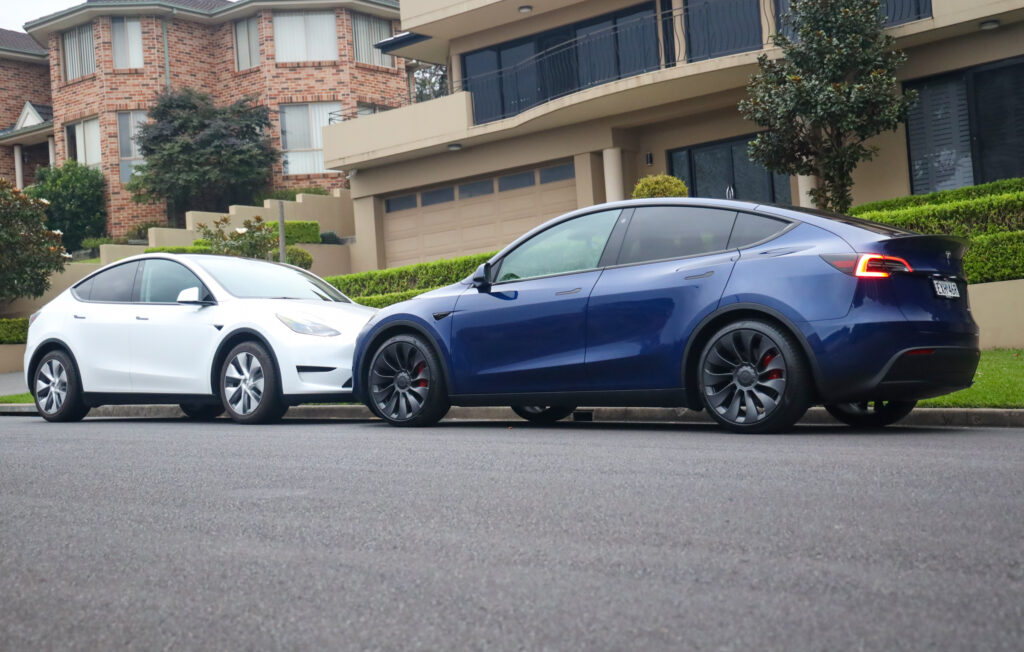
So which new Tesla Model Y is best for you: RWD or Performance?
How does a Tesla Model Y RWD and Performance cost?
It’s a big financial leap to go from Model Y Rear-Wheel Drive to Performance.
Depending on where you’re getting it registered a Model Y RWD costs between $73,000 and $75,000 drive-away – or less in NSW where it benefits from a stamp duty expedition.
The Model Y Performance is closer to $106,000 drive-away.
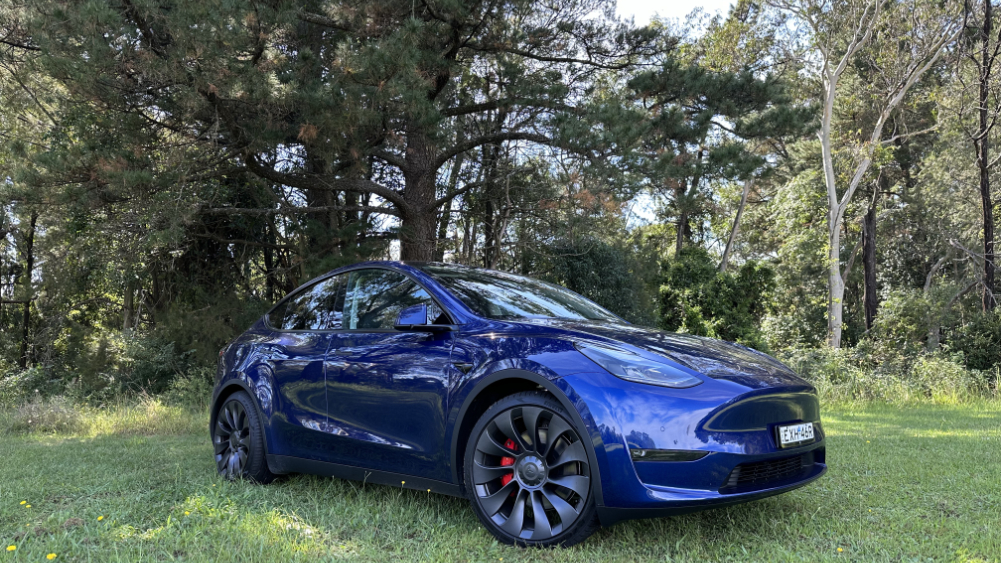
So it’s upwards of $30,000 extra to get into the Performance. A decent chunk of that is in taxes, too. As well as the additional stamp duty, there’s also more GST and at least $3655 in luxury car tax.
Better battery warranty for the MY Performance
Both Model Ys get a sub-standard four-year, 80,000km warranty covering the whole car. In an era when all big brands have at least five years coverage – most with unlimited kilometre protection – Tesla’s factory warranty seems underdone.
There’s every chance Australian Consumer Law (as overseen by the ACCC) will cover many components for longer, depending on what the issue is.
The battery and electric motors get a better eight-year warranty in each, though. In the Rear-Wheel Drive it’s capped at 160,000km whereas the Performance covers you to 192,000km.
Model Y RWD vs Model Y Performance: What’s the difference outside?
So, what do you get for your extra spend?
From a casual glance most people wouldn’t notice much difference between the Model Y Rear-Wheel Drive and the Model Y Performance.
Both share the same five-seat body (Australia doesn’t get the seven-seat version) and have the same selection of five colours: white, black, grey, red and blue.
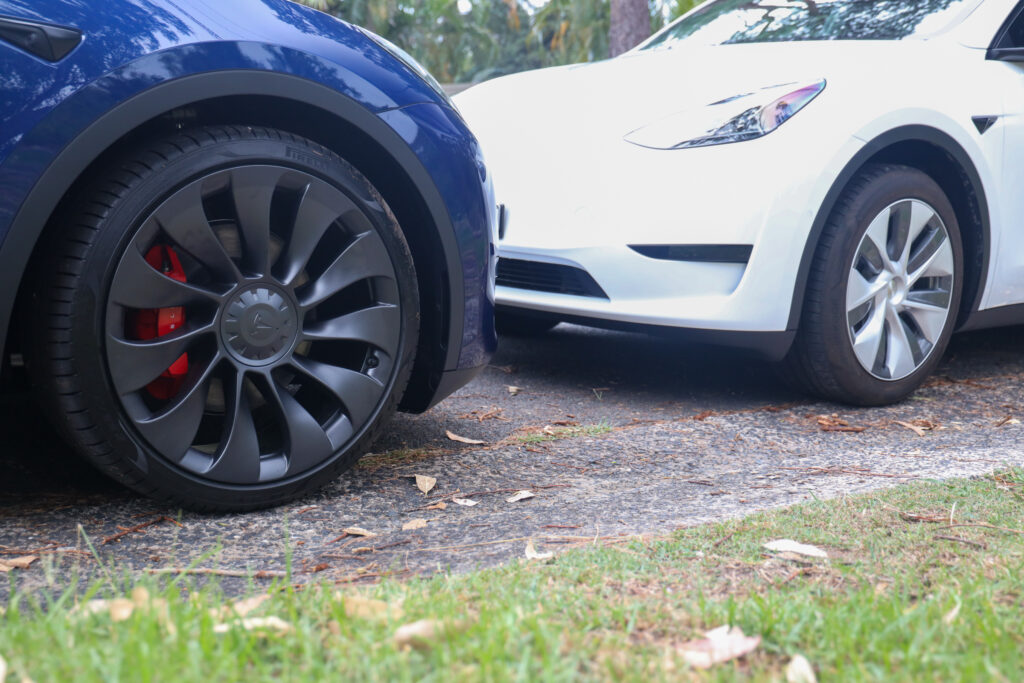
But look closely and there are subtle visual differences externally.
The MY Performance gets unique 21-inch “Uberturbine” wheels, for example, whereas the MY RWD gets 19-inch alloy wheels (or optional 20s) with plastic wheel covers. Inside the 21-inch wheels the brake calipers are painted red.
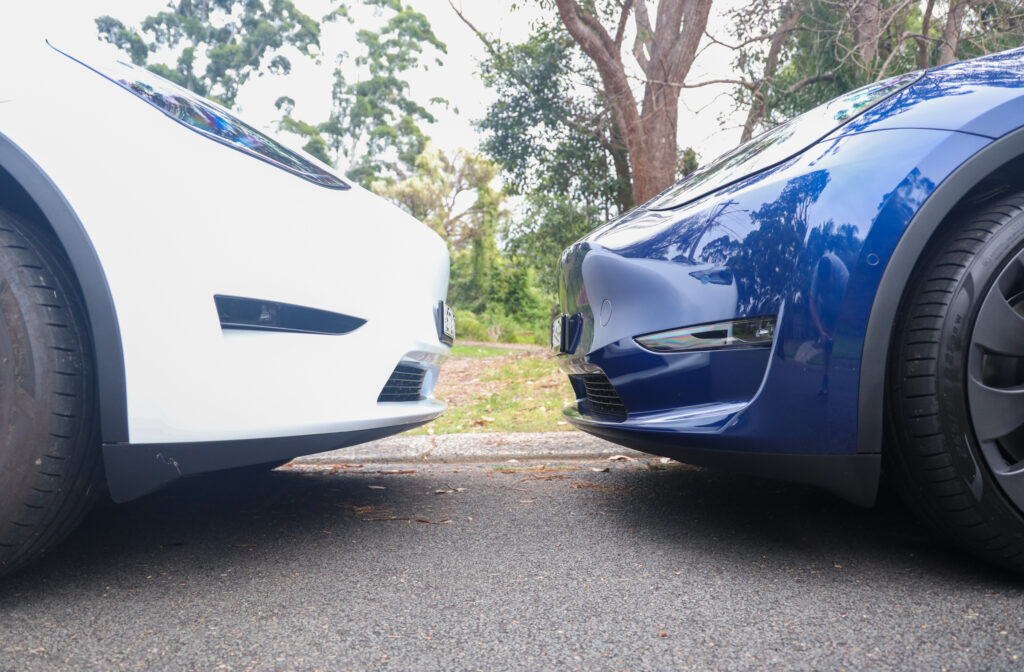
The Performance also gets small fog lights in its front bumper; that same section on the RWD is a blacked out piece of plastic.
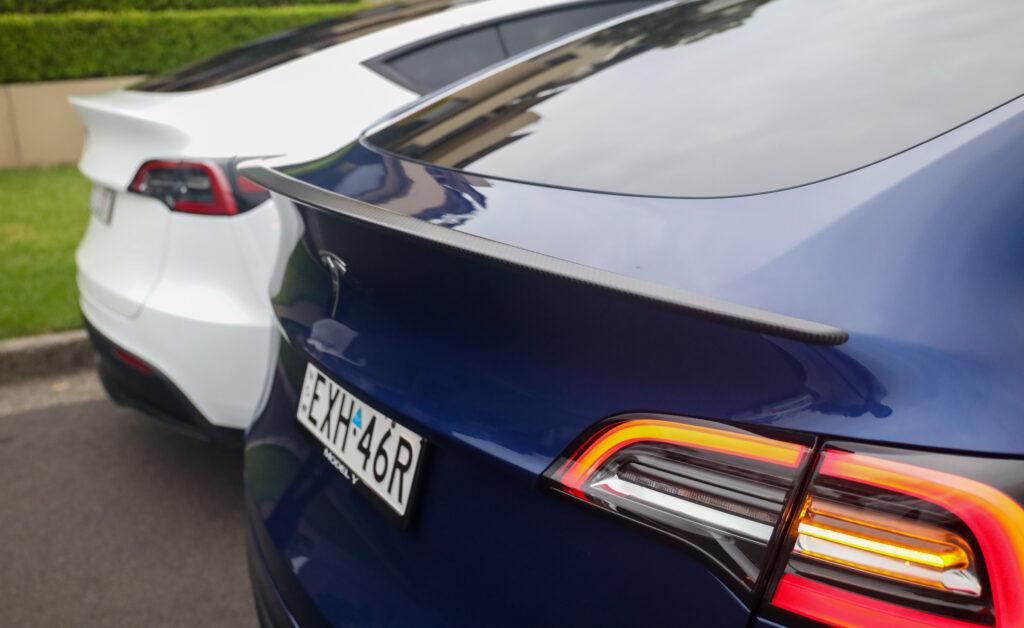
Where the Rear-Wheel Drive does without any badging, the Performance gets a “Dual Motor” badge underlined in red near its bottom right corner.
The Performance also gets a small carbon fibre lip spoiler. Plus it sits lower to the ground, further enhancing the tougher stance created by the bigger wheels.
Inside: MY RWD vs MY Performance
Inside, there’s almost no difference between Y RWD and Performance
Look down into the driver’s footwell and you’ll notice the Performance gets alloy pedals versus the more mundane black pedals of the Rear-Wheel Drive.
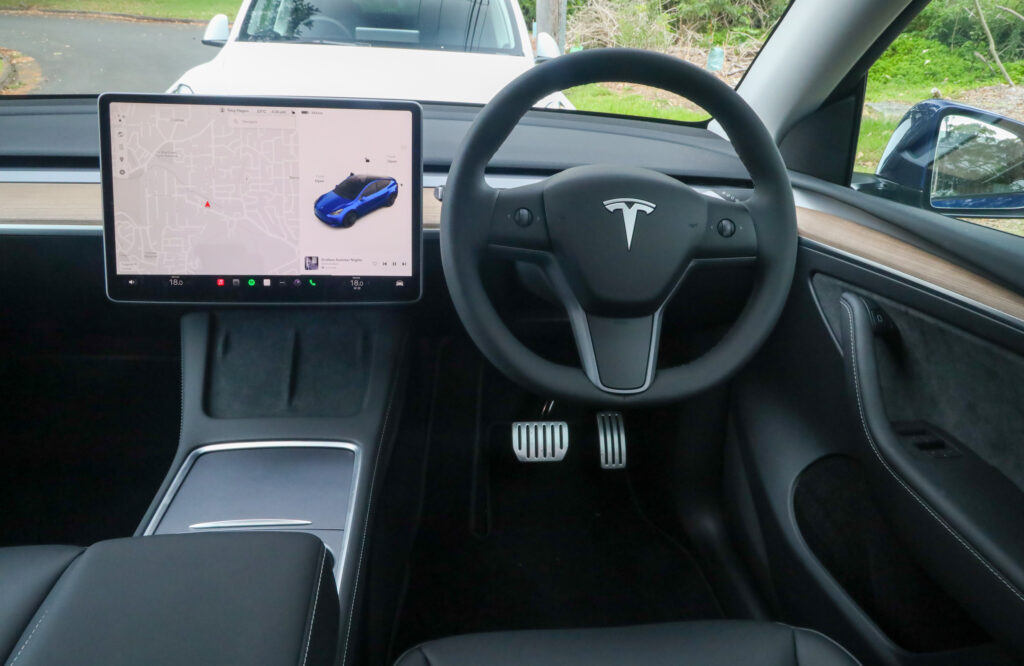
Both get the same black seat trim that is made to look vaguely like leather (it’s not). And both get some wooden strips to break up the grey dash plastics.
Plus there’s the same level of equipment. That means heated seats for all five positions, heated steering wheel, vast sunroof, electric front seats, electric steering wheel adjustment and one of the best sound systems in any new car. There’s also the ability to use a smartphone as a key.
Both also get the same 15-inch touchscreen that incorporates the usual Tesla thoughtfulness (customisation and driver profiles, dash cam, dog mode, etc) and occasional fun-to-haves that border on gimmicks (arcade games, lightshow, etc).
But delve into the screen and there are some subtle differences. On the Software page, for example, the Model Y Performance mimics the badge on the rump with a “Dual Motor” nomenclature underlined in red.
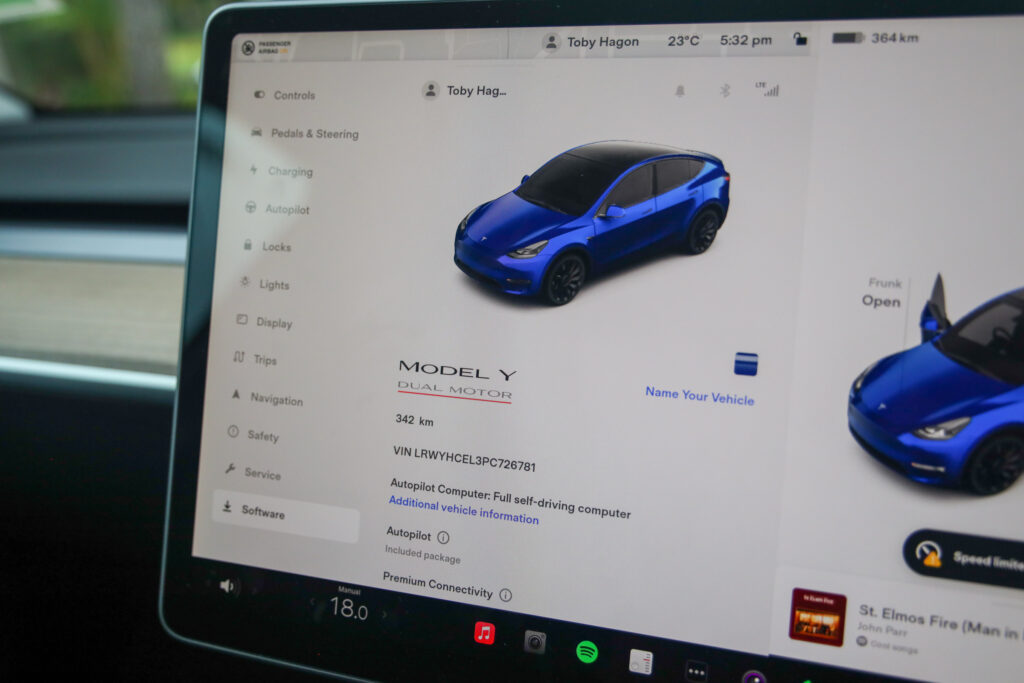
In the charging menu the Performance also allows the owner to set a maximum charge level of, say, 80 or 90 percent; it’s all about extending the longevity of the lithium-ion battery (which we’ll get to).
Plus the Lighting menu has a virtual switch to activate the front foglights.
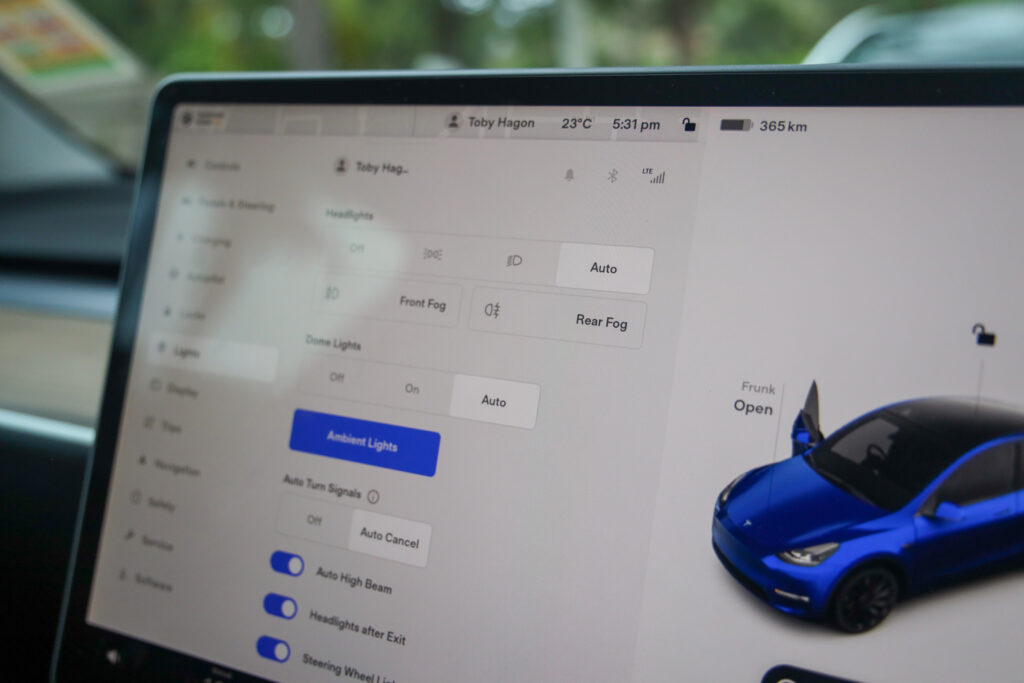
Beneath the skin of two Tesla Model Ys
The big changes between RWD and Performance are beneath the skin.
The Rear-Wheel Drive gets a single electric motor with a model code 3D7. As we’ve highlighted previously, it’s claimed to make 194kW and 340Nm.
The Performance also gets a front electric motor, which has the part code 3D3. Tesla says it makes 137kW and 219Nm.
However, the MY Performance also exchanges that 3D7 rear motor for a more powerful 3D6. It’s claimed to make 220kW and 440Nm.
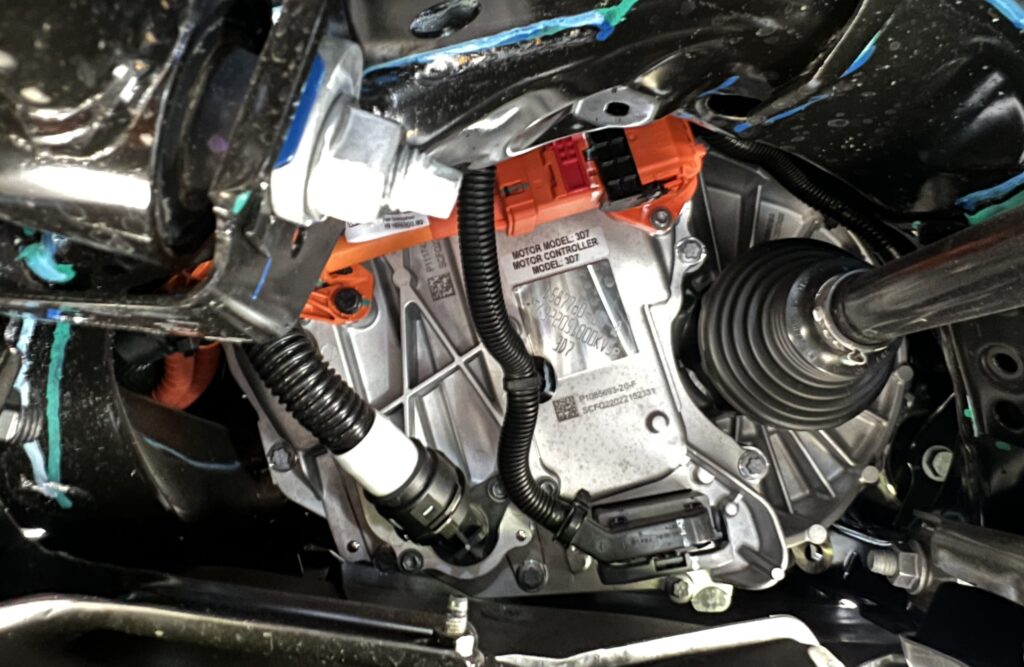
While the temptation is to add the front and rear outputs together, it’s not quite that simple. Sure, you can add the torque figures together to reasonably confidently say it can produce up to 659Nm.
But the power outputs of those front and rear motors are produced at different motor revs – and, therefore, different road speeds.
We’ve crunched the numbers to establish that the rear motor can make its peak at 76km/h and the front motor at 95km/h.
So while together they make a combined 357kW, it’s unlikely the two motors ever produce that at the same time.
What about performance?
The biggest differentiator is how they perform.
We’ve run both cars down the same piece of bitumen with the same VBox satellite-based timer to independently test performance figures.
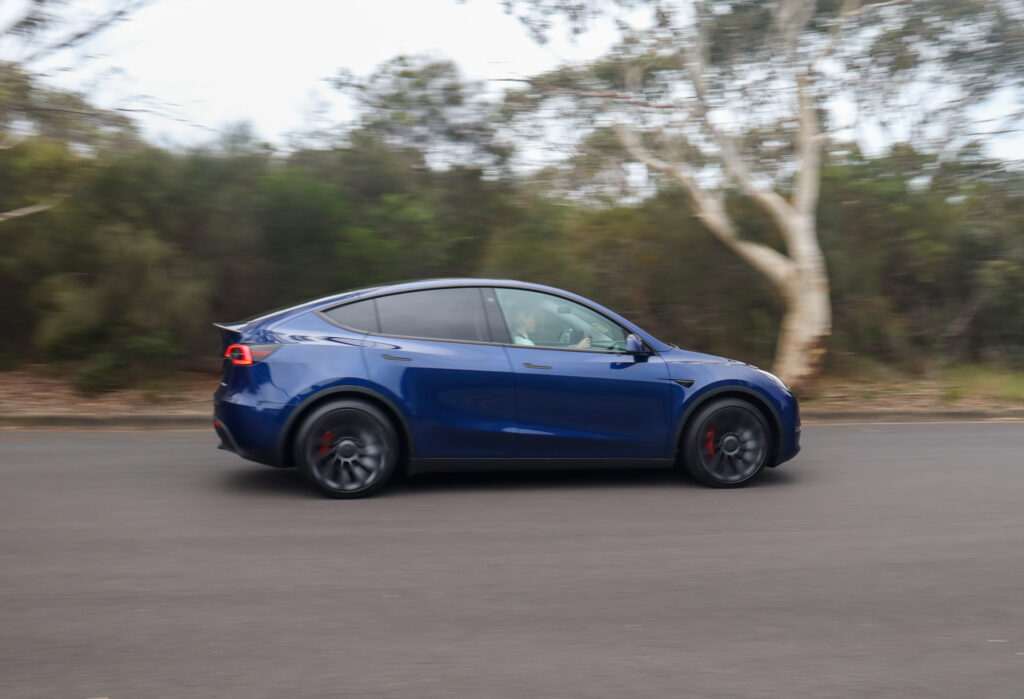
The detailed numbers are in the table below.
But the key ones are the 0-100km/h time, which is about 7.2 seconds for the Model Y Rear-Wheel Drive and about 4.2 seconds for the Model Y Performance.
Each is slower than the claims on the Tesla website (which is 6.9 seconds and 3.7 seconds respectively). That’s not overly surprising with the MY Perfomance, because that 3.7-second 0-100km/h figure has an asterisk attached that denotes “rollout subtracted”; that’s a drag racing term that starts the timer once the car has begun moving. We reckon that’s rubbish because it’s not truly indicative of a 0-100km/h time and also ignores the hardest part of getting a performance figure from a fast car: getting it moving.
Either way, the Performance’s acceleration is impressive, as is the way it gets its power to the ground. There’s zero chance of wheelspin in the dry and even on a wet road the electronics sort things out swiftly.
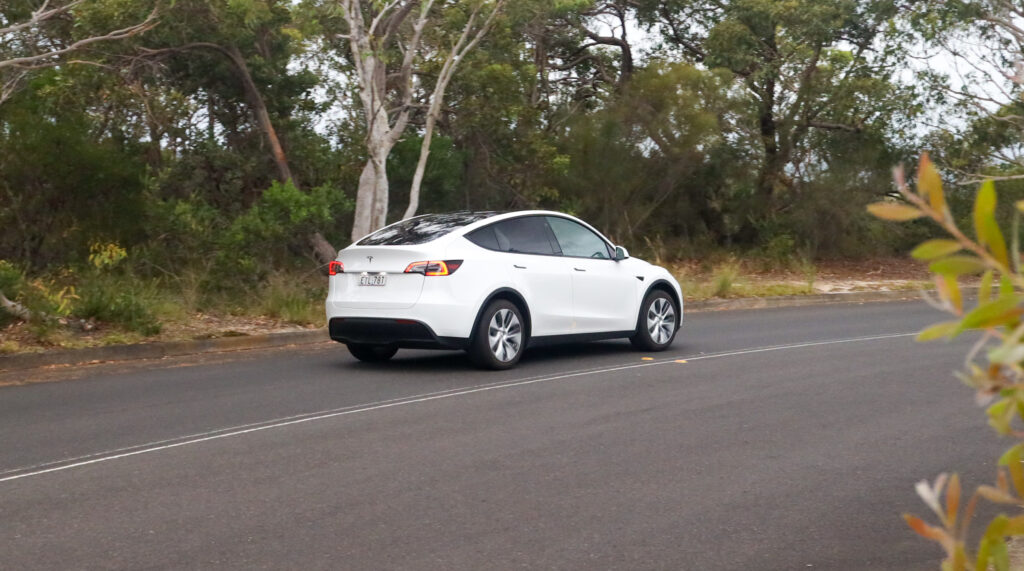
All of which translates to the on-road experience.
The Model Y Rear-Wheel Drive is more leisurely, especially from a standstill (it’s more noticeable when on a hill, at which point the initial response can be borderline lazy by EV standards).
But the excellent throttle response and sharp 60-100km/h performance more than make up for it (it’s not far off one of the last of the Australian-made V8s). Few will be disappointed with the acceleration of the RWD.
But the Performance ultimately outdoes it in every performance aspect.
It’s genuinely brisk off the line and maintains its enthusiasm as speed (quickly) builds.
Firing out of a corner is that little bit easier. And the Model Y Performance has loads of oomph from low speeds.
| Tesla Model Y RWD | Tesla Model Y Performance | |
| 0-10km/h | 0.66s | 0.40s |
| 0-20km/h | 1.34s | 0.82s |
| 0-30km/h | 2.03s | 1.21s |
| 0-40km/h | 2.73s | 1.57s |
| 0-50km/h | 3.42s | 1.95s |
| 0-60km/h | 4.12s | 2.34s |
| 0-70km/h | 4.81s | 2.72s |
| 0-80km/h | 5.50s | 3.13s |
| 0-90km/h | 6.30s | 3.67s |
| 0-100km/h | 7.17s | 4.23s |
| 60-100km/h | 3.05s | 1.89s |
Testing performed using a VBox satellite-based timer
RWD v Performance: Which is more efficient?
We took each of our cars on the same road test loop. Same day, same driver, same ventilation settings … you get the idea.
Across the loop our Model Y Rear-Wheel Drive used 15.7kWh per 100km whereas the Model Y Performance used 18.0kWh/100km.
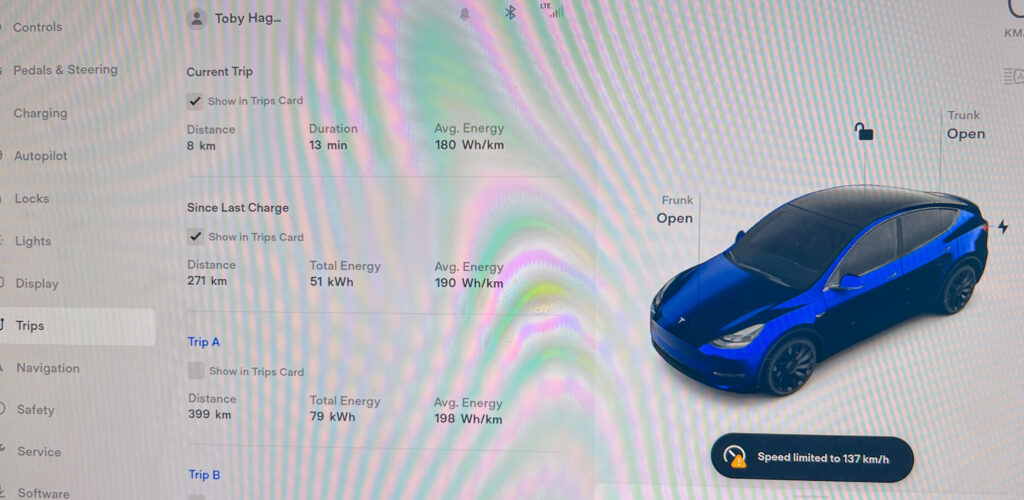
So the additional weight, performance and rolling resistance from the stickier tyres of the Performance meant it used about 15 percent more energy.
The official consumption figures according to the sticker on the windscreen are 15.7kWh/100km for the RWD and 17.3kWh/100km for the Performance.
Charging the Model Y RWD vs Performance
The RWD can take a maximum 170kW of charging power whereas the Performance can accept up to 250kW.
Both are high – and the Performance is the third fastest charging EV in the country. Only the Porsche Taycan and Audi e-Tron GT beat it, with up to 270kW charging capability (the Kia EV6, Genesis GV60, Hyundai Ioniq 5 and Hyundai Ioniq 6 all claim up to 350kW charging, but none of them do, with the maximum charge rate at about 230kW).
You’ll need a Tesla Supercharger to experience anything close to those maximum charge rates or one of the faster DC public chargers (Teslas can only charge at 400 Volts and the 350kW chargers only supply 175kW at 400V or the full 350kW at 800V).
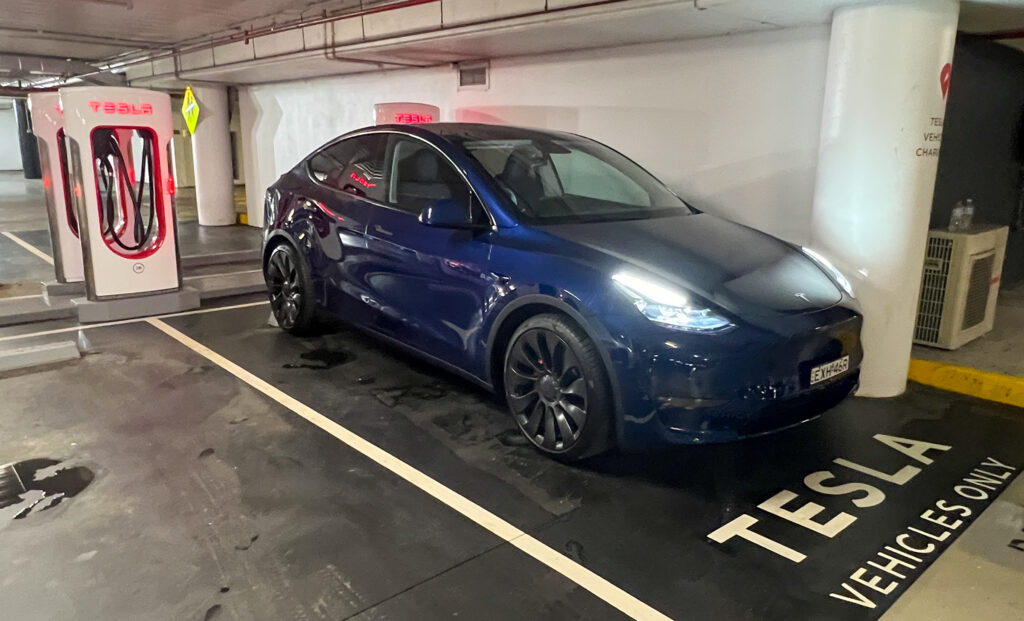
So really, the fastest charging you’ll experience with today’s infrastructure in a Model Y Performance will be at the new version three (or V3) superchargers, which can supply up to 250kW.
READ MORE: Charging a Tesla Model Y at a new V3 Supercharger
However, there are very few of those 250kW V3 chargers in Australia currently (in Sydney, for example, there’s only one in the southern suburbs).
In both instances those maximums will only occur when the charging planets align – usually with a very low state of charge – and even then only briefly.
Different batteries
In terms of battery capacities and chemistries, this is where things get very different.
The Model Y RWD uses an LFP chemistry, which denotes lithium ferrous phosphate, or lithium iron phosphate. It’s cheaper to manufacture and does without cobalt or nickel.
The Model Y Performance uses a more traditional lithium ion battery with a higher energy density. It’s also a larger capacity.
While Tesla doesn’t quote capacities, you can do some calculations to get close to the money. In short, the RWD has about 62kWh of energy storage and the Performance has 79kWh.
However, it’s not all about size. Each battery chemistry should be treated differently.
Tesla recommends the RWD’s LFP battery is topped up to 100 percent state of charge (SOC) regularly (at least once a week).
For the Performance’s battery it’s recommended not to regularly charge beyond, say, 80 or 90 percent SOC (most EV manufacturers make similar recommendations).
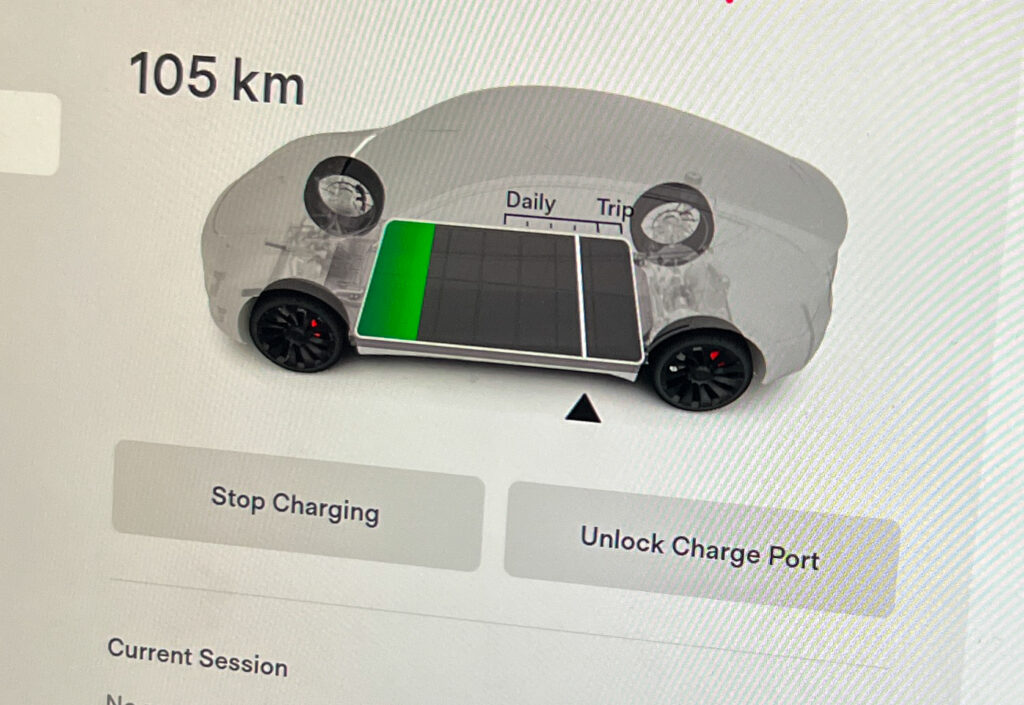
That’s why in the Charging menu within the display screen for the Performance there’s the option of setting a maximum charge capacity for daily driving; a slider allows you to choose a lower level for the maximum SOC, all with the aim of extending battery life.
Of course, when you do want to take off on a big trip you can extend that slider all the way to the right and unleash the full capacity to maximise range.
However, it means that for everyday driving, the Y Performance’s useable EV range is well below the 514km claim. Think something closer to 400km.
And that’s before we factor in the differences between claimed range and what you’ll likely experience in the real world.
A fully charged Model Y RWD will usually show about 430km of range, but we’ve found the useable is more like 370-380km.
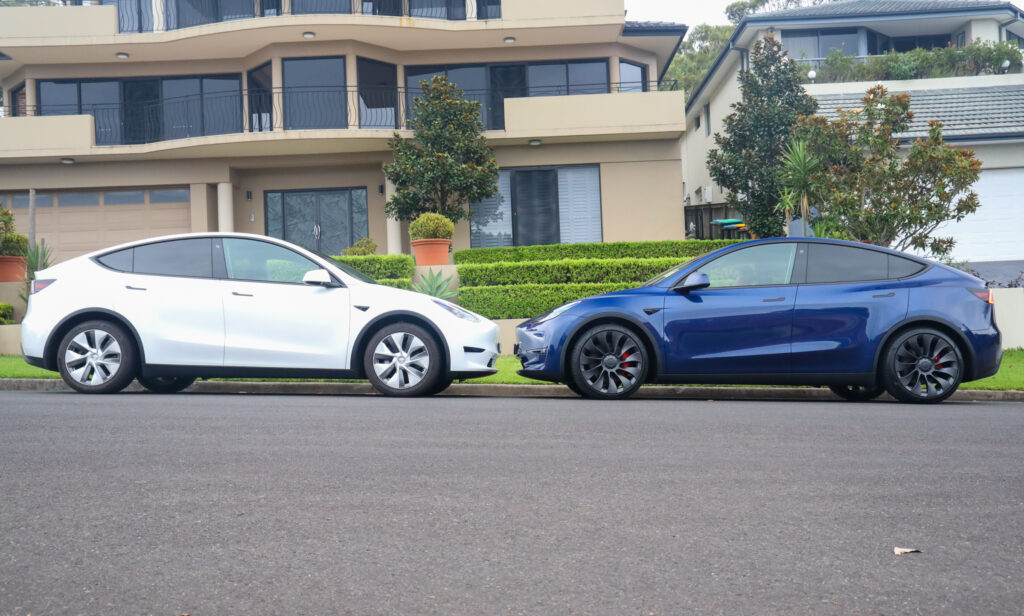
We tried two new Model Y Performances and each suggested about 475km once fully charged. Our experience showed you can expect something like 410km in the real world. Knock that back to 350-ish kilometres if you’re limiting the maximum charge rate.
On both MY versions those figures will come down further if you doing lots of 110km/h freeway driving or you’re regularly using Sentry mode (which uses the cameras to monitor around the car) or the external temperature is below zero degrees.
Firm suspension, but Model Y Performance wins on comfort
The Y RWD has copped criticism for its firm ride. It’s not helped by the tall-ish seating position that makes left-right movements more obvious.
Nothing has changed with that seating position in the Y Performance.
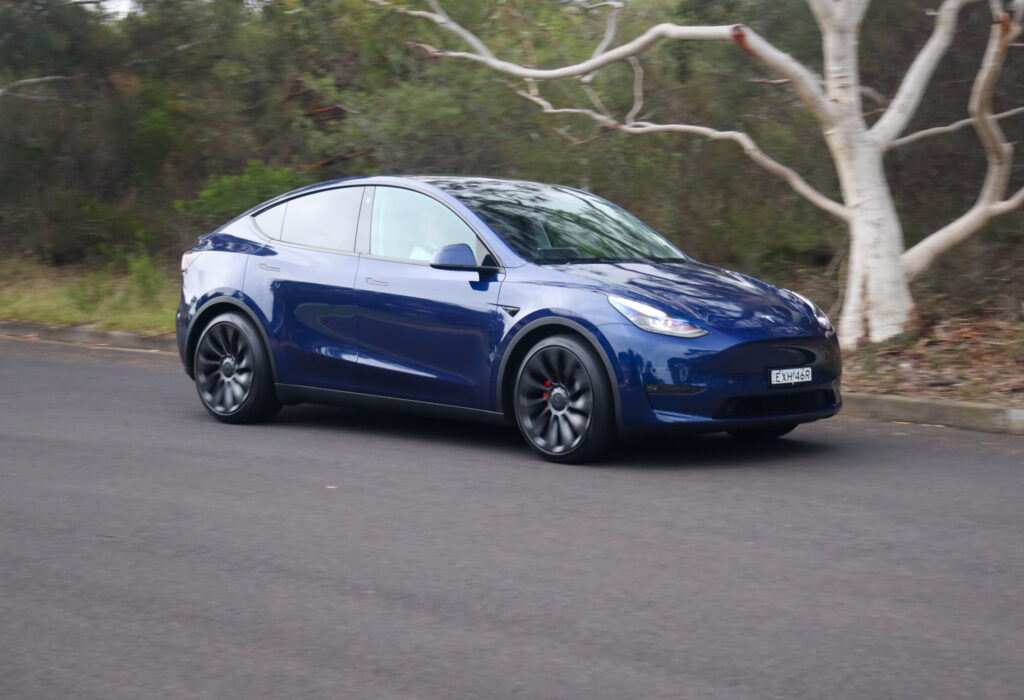
But Tesla has introduced a new Comfort suspension setup designed to make things slightly plusher.
If you’re expecting a magic carpet ride you may be disappointed.
That said, even though the Performance has lower profile tyres – for less air between the wheel rim and the road – it’s less prone to harshness over sharp bumps.
It’s still firm, but there’s some additional compliance that makes it easier to live with.
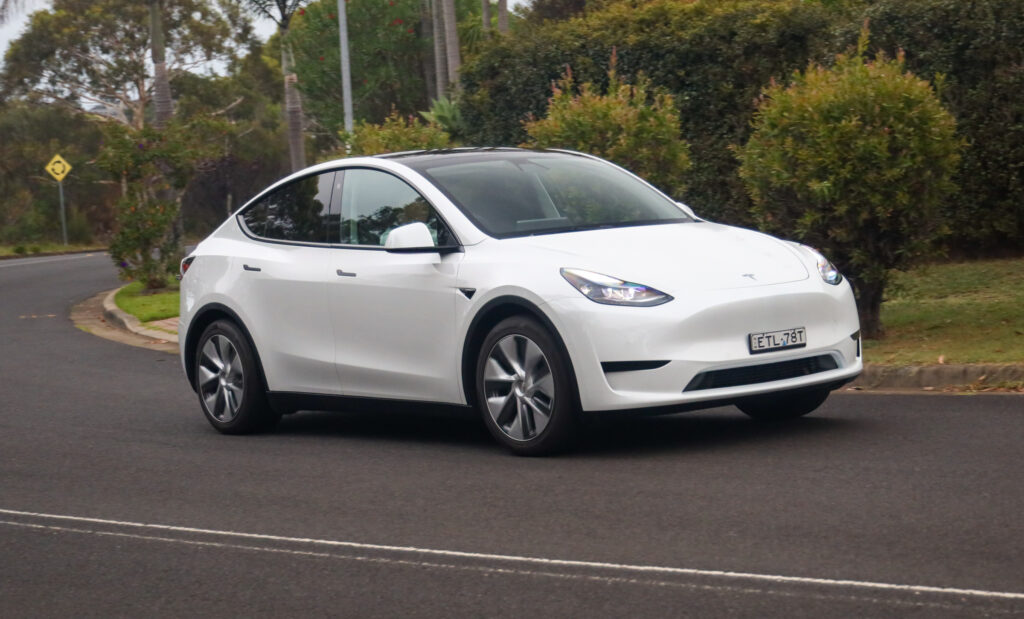
On near-smooth surfaces you’ll still get some mild movement, reminding you this is a car aimed at pace over comfort.
Plus the booming from the rear suspension is still there, not helped by a lack of a cover between the boot and the cabin.
Handling: RWD vs Performance
The basics between each is the same, but the big difference is in the final contact with the bitumen: the tyres.
The Model Y RWD gets standard 19-inch rims with 255/45 Hankook Ventus tyres.
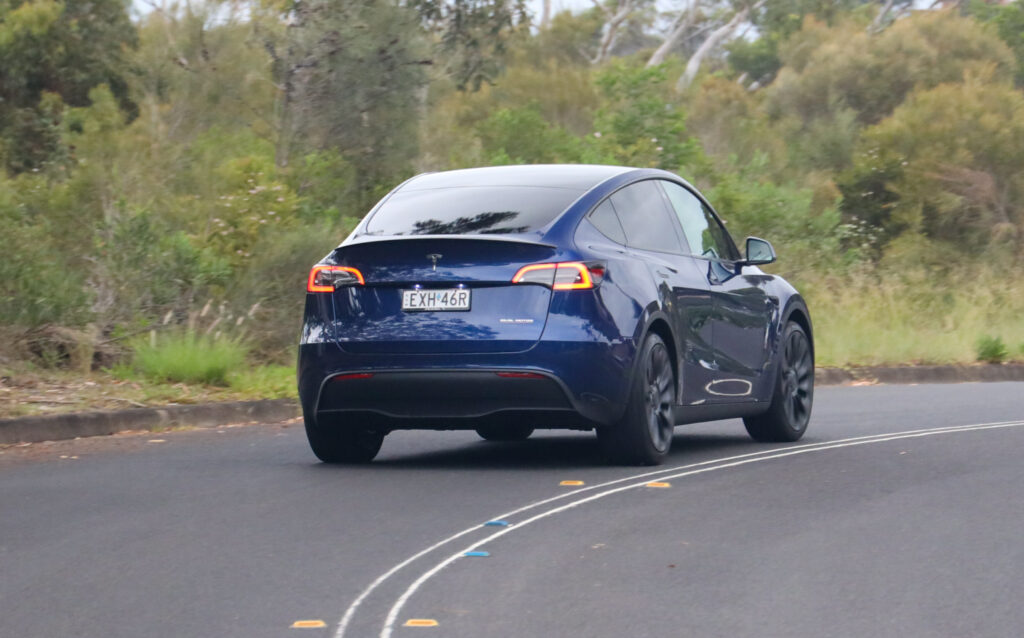
They’re reasonable tyres although have more an efficiency focus than genuine sportiness.
For the performance on offer they’re more than acceptable, but if you really want to explore the dynamic limits they’ll start to protest.
The Model Y Performance gets standard 21-inch wheels with staggered tyres (the rears are wider than those up front). The Pirelli P Zero rubber measures 255/35 on the fronts and 275/35 on the rears.
It’s a serious step up in traction. Aim at a corner and the MY Performance hunkers down and hangs on.
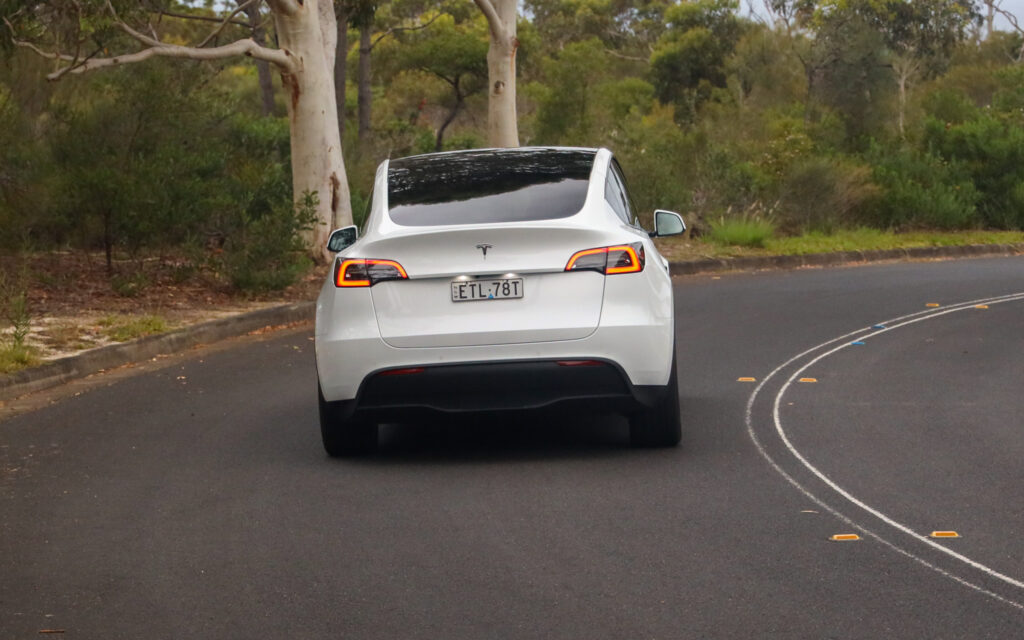
It’s lacking some poise and still has the unusually direct steering also on display in the RWD, but there’s raw grip to ramp up the thrills.
So, which is best? Model Y RWD or Model Y Performance?
The Model Y Rear-Wheel Drive gets all the key features of the Performance and is a great electric SUV to drive.
Sure, the ride is firm, but Tesla says the Comfort suspension setting will soon make its way to the Rear-Wheel Drive, which we’d expect to make a decent difference.
The RWD also lacks that shove-you-back-in-your-seat thrust that can be intoxicating, but for most daily driving it’ll be more than adequate.
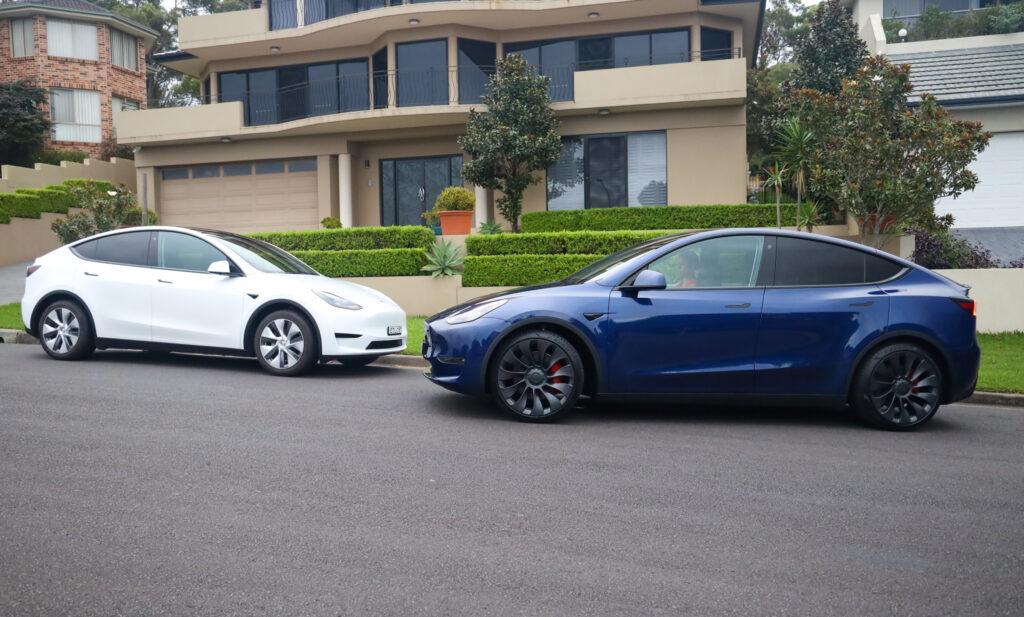
Plus, while the range of the Performance is ultimately longer, for everyday driving the RWD’s different battery chemistry arguably makes it a more useful device.
All of which is tipping the scales ever so slightly towards the Rear-Wheel Drive.
If the price gap between the two were less – say $15k-$20k – then we’d likely be going the other way.
But with $30K-ish between them we reckon the RWD will make more sense to more people.
Tesla Model Y Rear-Wheel Drive price and specifications
Price: About $73,000-75,000 drive-away
Basics: EV, 5 seats, 5 doors, SUV), RWD
Range: 455km (WLTP)
Battery capacity: 60kWh (estimated)
Battery warranty: 8 years/160,000km
Energy consumption: 15.7kWh/100km (WLTP)
Motors: 1 rear 194kW/340Nm
AC charging: 11kW, Type 2 plug
DC charging: 170kW, CCS combo plug
0-100km/h: 7.2 seconds (tested)
Tesla Model Y RWD advantages over Model Y Performance
More affordable
Potential to exploit some EV rebates, especially in NSW
About 13 percent more efficient
Battery can be topped up to 100 percent regularly
Tesla Model Y Performance price and specifications
Price: About $106,000 drive-away
Basics: EV, 5 seats, 5 doors, SUV), AWD
Range: 514km (WLTP)
Battery capacity: 79kWh
Battery warranty: 8 years/192,000km
Energy consumption: 17.3kWh/100km (WLTP)
Motors: 1 front 137kW/219Nm and 1 rear 220kW/440Nm
AC charging: 11kW, Type 2 plug
DC charging: 250kW, CCS combo plug
0-100km/h: 4.2 seconds
Tesla Model Y Performance advantages over Model Y RWD
Heaps faster acceleration
All-wheel drive traction
Bigger capacity battery for longer range, but recommendation is to lower charge peak for daily top-ups
Better stance courtesy of lower suspension, bigger wheels and rear lip spoiler

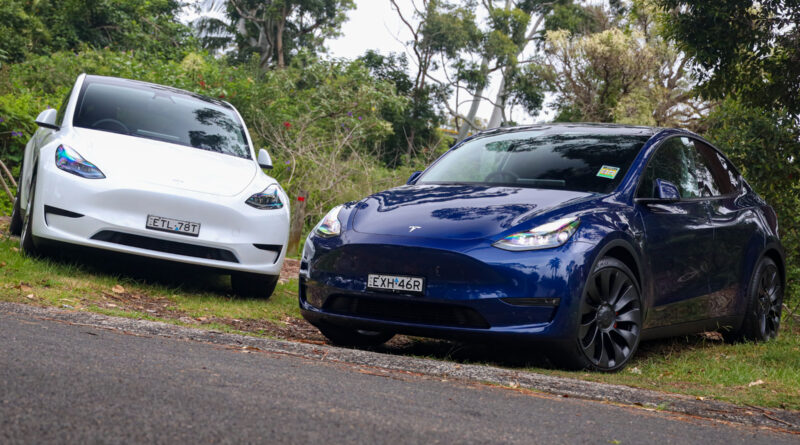
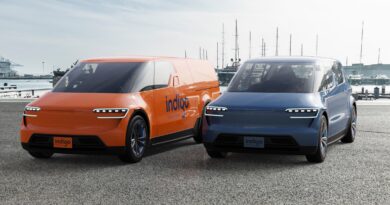
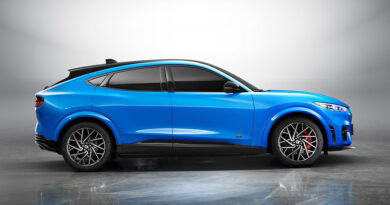
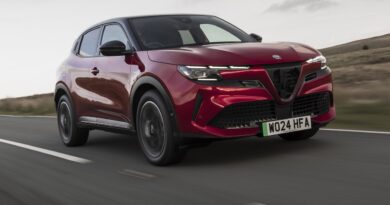
Great comparison review, thanks Toby. Regarding the ride difference between the two. I see the RWD model pictured appears to be the 22 model you purchased last year. You mention in this review the “comfort suspension” change may well flow through shortly for RWD. As I own a Jan build 2023 model RWD I wonder whether that 23 build may already feature the update Media reports, all we have to go on, suggests it is now across both models?
Thanks.
I spoke to people at the Tesla showroom and they were adamant all Model Y Rear-Wheel Drives had not yet had a suspension update but that it was expected soon-ish.
You dint mention these MYP Pros in your summary :-
– longer battery warranty
– comfort suspension
In terms of incentives, RWD also qualifies for the FBT exemption (as it’s under the LCT threshold) – so effective cost difference for financing arrangements is substantially larger than just the $30k sticker price. That was ultimately the factor that pushed us toward RWD.
I do not understand what is the point of a Model Y performance model. It’s not a sports car. They try to market it as an SUV. Really not sure who would spend an extra $30 grand in this for performance.
I much prefer if they release a Model Y version more suitable for SUV stuff, like longer range, AWD, higher ground clearance, maybe standard roof bars and tow bar.